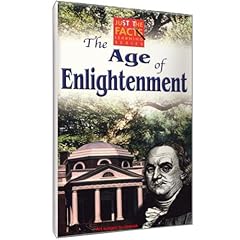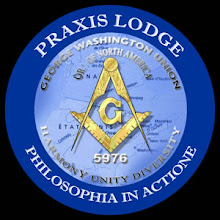 In modern physics, quantum entanglement, put in an oversimplified way, is a phenomenon whereby two sub-atomic particles are split and go separate directions, yet maintain a bizarre form of communication and behavior, such that if the state of one sibling particle is "tweaked," the state of the other sibling particle exhibits a reactionary change of its state. This phenomenon is instantaneous, that is, faster than the speed of light. It does not matter if the particles are three feet apart or three thousand light years apart. This is not just theoretical physics; rather, this phenomenon has been reproduced and measured many times in an experimental context. The book, "Entanglement," by Amir Aczel is an excellent reference to understand this phenomenon and its history.
In modern physics, quantum entanglement, put in an oversimplified way, is a phenomenon whereby two sub-atomic particles are split and go separate directions, yet maintain a bizarre form of communication and behavior, such that if the state of one sibling particle is "tweaked," the state of the other sibling particle exhibits a reactionary change of its state. This phenomenon is instantaneous, that is, faster than the speed of light. It does not matter if the particles are three feet apart or three thousand light years apart. This is not just theoretical physics; rather, this phenomenon has been reproduced and measured many times in an experimental context. The book, "Entanglement," by Amir Aczel is an excellent reference to understand this phenomenon and its history.No one knows exactly how quantum entanglement can occur or what underlying causes or factors allow it to happen. But one thing is for certain, which was perhaps best stated by physicist Feynman, "I think it is safe to say that no one understands Quantum Mechanics." Moreover, are phenomena like quantum entanglement so mysterious and counter-intuitive to us because they are this way inherently, or because we have unscientifically and unconsciously assumed a metaphysical worldview (e.g., that space is real, extended, and objective, and exists independent of our minds)? This is the crux of a problem that very few thinkers introduce in the context of modern physics and science.
 In the history of science, and even present in the world of science today, there is, metaphorically speaking, another form of entanglement at play. This is the interplay of metaphysics and scientific enquiry, including but not limited to constructing hypotheses, collecting data, formulating general laws, and building theories. In his book, "The Metaphysical Foundations of Modern Physical Science," E. A. Burtt provides a historical account of what many people might regard as surprising in the world of science.
In the history of science, and even present in the world of science today, there is, metaphorically speaking, another form of entanglement at play. This is the interplay of metaphysics and scientific enquiry, including but not limited to constructing hypotheses, collecting data, formulating general laws, and building theories. In his book, "The Metaphysical Foundations of Modern Physical Science," E. A. Burtt provides a historical account of what many people might regard as surprising in the world of science.Burtt fundamentally reveals that the inspiration or basis for many theories and new ideas during the scientific revolution was not based on empirical data and experimentation; rather, they were driven by the metaphysical and aesthetically charged geometrical atomism of pre-Socratic Greek philosopher Pythagoras. According to this worldview, the underlying essence of the universe is mathematical, and in the case of Pythagoras, the mind-independent world was literally comprised by physical, geometrical atoms or structures. This was not a worldview that was supported by facts and empirical testing at the time, but was introduced on a priori (before experience) grounds and reasoning.
Burtt begins with Copernicus and his heliocentric view of the solar system, which stated that the Sun was the center of the solar system, not the earth. Contrary to our intuitions or education on how hypotheses originate, Copernicus was not swayed by any empirical data to suggest this new worldview (which was conceptually not new, but posited by Greek philosopher Aristarchus of Samos in 4th century B.C.), rather he was infatuated with the re-birth of the Pythagorean metaphysic via Neoplatonism.
At the time of Copernicus (1473 – 1543), there were no empirical issues with Ptolemy's Christian inspired and anthropocentric geocentric theory, and in fact Copernicus' heliocentric theory was up against several problems, such as the inability at the time to observe and validate parallax (the shifting of the observable position of the stars based on the assumption that the earth shifts its position as it revolves around the Sun). And of course, Copernicus was up against the religious powers at the time, which used Biblical text to support the geocentric view of the universe.
In addition, both Copernicus and Ptolemy’s systems were able to predict the same celestial phenomena, so from a practical standpoint, Copernicus offered no advantage with his theory. The primary difference was that Copernicus' heliocentric theory exhibited or implied more harmony, simplicity, and beauty with its application of less epicycles (small circular deviations that planets had to take as they rotated around the Sun or Earth, to account for their real elliptical pathways, which were unknown until Kepler). Accepting the heliocentric theory based on the preconceived notions of harmony, simplicity, and beauty was not based on empirical testing, but was derived from the Pythagorean metaphysic, and indeed much of the Greek worldview that the universe was fundamentally orderly, harmonious, and beautiful at its core. This aesthetic and metaphysic was accepted by reason alone, a priori, not on something remotely close to the scientific method. Put another way, this metaphysic described the way thinkers wanted the essence of the universe to be, not the way it was validated to be via observation.
In short, Copernicus essentially embraced the Pythagorean mathematical interpretation of the universe and became convinced that the whole universe is made up of numbers. And since mathematicians at the time were attracted to the notion of simplicity, beauty, and harmony, this provided an a priori basis for accepting his heliocentric theory.
Burtt moves on to make a similar case in light of the theories and work of Kepler, Galileo, Descartes, Gilbert, Newton, and others. All these great thinkers were inspired and influenced by the same Pythagorean metaphysic of numbers and the a priori, untestable assumption that the underlying (not observable) essence of the universe as mathematical.
Kepler worshiped the Sun metaphorically as "God"; introduced a mysterious, aesthetic, and untestable view of causation; and asserted that the real world existed independent of the mind and was entirely mathematical in nature.
Following the lead of Copernicus and his attention to celestial phenomena, Galileo applied the Pythagorean metaphysic to the world of terrestrial dynamics; stated that nature acts according to immutable mathematical laws (the language of the universe); asserted that matter is comprised of infinitely small indivisible atoms, which only possess mathematical properties (number, figure, magnitude, position, motion, etc); and introduced the notion of "occult" indestructible forces that governed the movement of matter behind the scenes (since matter by itself floating around in absolute space cannot govern its own orderly behavior without the aid of an exterior agent).
Descartes viewed the universe as a geometrical machine; denied the existence of a void or vacuum in space (as did many during that time to deal with the problem of "Action at a Distance); and constructed a radical mind-body dualism that would plague Western world thinkers for the rest of history, as well as introduce a number of philosophical absurdities and challenges (such as Descartes’ ludicrous idea that the pineal gland in the brain was the connection point or “dysfunctional conjunction” between the material body/brain and the soul).
Henry More envisioned forces as the "Spirit of Nature", where gravity, cohesion, magnetism, etc are not mechanical (like the geometrical motion of bodies), but “spiritual” or indicative of a divine presence.
Gilbert, the father of the study of magnetism, posited that magnetism was the "soul" of the universe, and that this soul, though spiritual, is extended in space (not immaterial) and explains action at a distance.
Newton truly turned over a new leaf and suggested that we can never know the essences or causes of these "occult" forces in nature, but can only mathematically reduce and formulate their observable effects (such as his inverse square law of gravity). Yet in the end he ironically embraces, as did many of his predecessors, the “God of the Gaps” and affirms that the material world is fundamentally mathematical (return of the Pythagorean metaphysic) and is composed of hard, indestructible particles that were created by God and have only mathematical attributes; that the human soul is locked up inside the body with absolutely no contact with the real, external physical world (dualism of Descartes); and that based on the metaphysic of primary-secondary qualities, secondary qualities (color, taste, etc) are all phantasms created by the mind, not properties of the physical, external universe.
Newton and those before him ultimately sold out to metaphysics, as their “fudge factor” and way of coping with the unknown. Or, as an alternative and perhaps more likely explanation, shall we speculate that maintaining a small and virtually harmless component of theological mysticism was their way of staying out of trouble with the Church, lest they be burnt as the stake as Bruno was in 1600 for his heretical ideas?
We can summarize the extent of metaphysical foundations of modern science as follows:
- The Pythagorean-Neo-Platonist view that the underlying nature of the universe is mathematical, assumed a priori and based on the aesthetic principles of harmony, simplicity, and beauty (Copernicus et al)
- Deification of the Sun and assumption that harmonious mathematical structures cause observable phenomenon (Kepler)
- Atomism: physical universe is comprised of indestructible particles that have only mathematical properties (Galileo et al)
- A priori assumption that all empirical phenomenon can be reduced to mathematical relationships (all)
- Universe viewed as “geometrical machine” (Descartes)
- Concept of primary/secondary qualities: only mathematical qualities of physical objects are real; secondary qualities (smell, taste, color, etc) are figments of the mind (all)
- Radical mind-body dualism: minds/souls completely detached and separate from the real, physical world (Descartes et al)
- A priori knowledge of the universe is mathematical and of divine origin
- Introduction of ether and occult or spiritual/divine forces to avoid the problem of “action at a distance” (spirit of nature, magnetic soul, God as incorporeal or extended plenum, etc)
The metaphysical foundations of science pose some interesting questions for discussion and further thought:
- Does it matter what scientific enquiry starts with or is influenced by (metaphysical models or systems, a priori assumptions, etc), provided that it yields predictable, practical, and consistent results?
- What is the function of a model in science?
- Are models just metaphors as platforms for scientific prediction, or are we justified in their reification (assuming they literal descriptions of the world?
- Do any theories of science today exhibit the same influence of Pythagoreanism? (e.g., String Theory)
Download a PowerPoint and graphical presentation of this article here: http://www.box.net/shared/8pqfevy8hd






